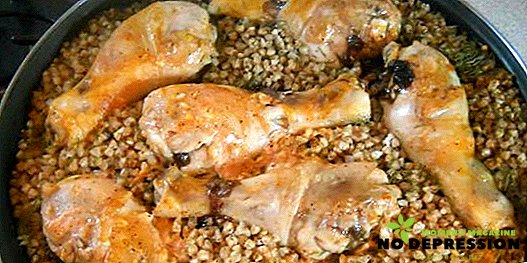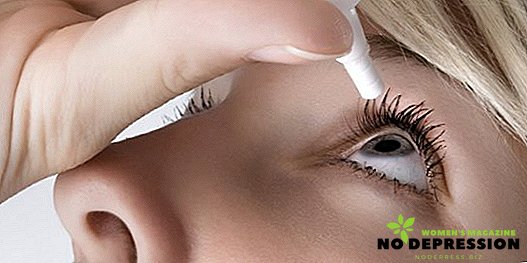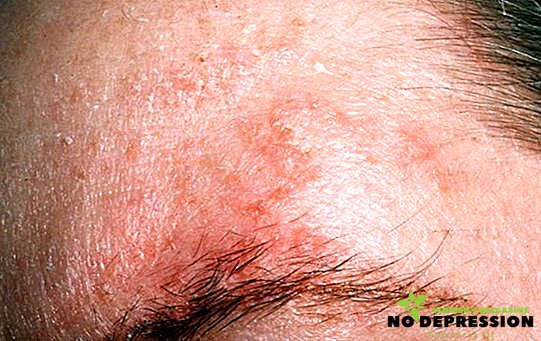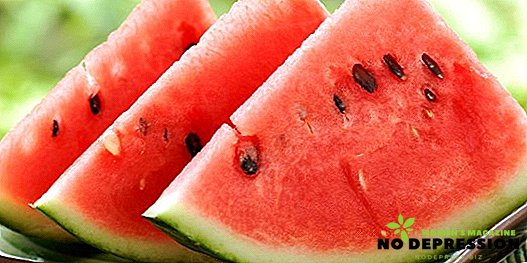Stomatitis is called inflammatory diseases of the oral cavity. Children are particularly susceptible to similar diseases due to the immaturity of the immune system and unformed hygiene skills.
In order to teach the child to properly care for the oral cavity and wean out trying to clean not very clean objects on the tooth, it takes more than one year, so the parents of young children will have to deal with stomatitis from their baby more than once.
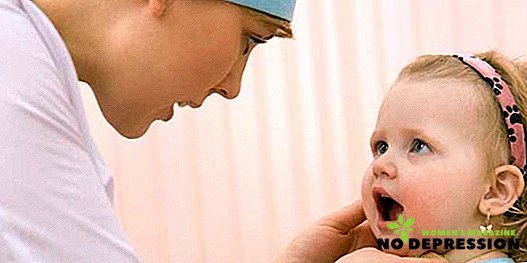
Classification of stomatitis in children
There are several types of the disease, depending on the area of damage and the causes of stomatitis. Determining the type of pathology can be of great help in treating and identifying related health problems.
First of all, there are acute, subacute and chronic stomatitis.
The acute form of the disease develops quickly and responds well to treatment, subacute - it is less pronounced and requires longer efforts for treatment, chronic - it lasts a lifetime, with varying success it is amenable to therapy.
Aphthous
This type of disease is characterized by the appearance of small lesions (aphthae) on the gums, the inner surface and the red border of the lips, on the tongue. In the inflamed areas, erosions are rapidly forming, which are covered with a crust, the disease is prone to spreading over the mucosal surface.
Treatment of this type of stomatitis is a rather time-consuming process that takes time; without treatment, the disease is prone to a chronic course with frequent relapses.

Catarrhal
It is characterized by large foci of redness, covered with white bloom, unpleasant smell from the mouth, unpleasant sensations when eating. Most often affects the gums, because this type of disease - a consequence of improper care of teeth.
Ulcerative
With this form, there are small ulcers in the mouth, which are covered with a gray bloom. You may experience bleeding and pain when brushing your teeth.
In children, this form is quite rare, as a rule, with severe congenital abnormalities of the immune system.
Viral
Most often caused by the herpes virus and is a companion of colds. The disease passes on its own along with a cold, but has a tendency to relapse, since the herpes virus remains in the body all its life.
Candida
Quite a frequent occurrence in babies of the first year of life. It often occurs as a result of candidiasis of the mammary glands in the mother or improper sterilization of bottles with the mixture. In older children, fungal stomatitis suggests significant impairment of immunity.

The causes of the disease
Stomatitis in children usually occurs under the influence of several factors. The oral cavity is constantly in contact with various infectious agents, especially in children.
Normally, pathogenic microorganisms are replaced by the natural microflora of the mucous membrane and are suppressed by the immune system. But in children, especially younger ones, neither normal microflora nor the immune system are sufficiently formed to effectively resist infectious agents.
Among the pathogens may be different types of staphylococcus, falling into the oral cavity with dirty hands and environmental objects.
In infancy, Candida genus fungi are a common cause, which occurs during feeding if the mother suffers from thoracic candidiasis or is not sufficiently clean.
Another reason is the herpes virus, which can be infected in a family or children's team. The virus is constantly present in the body, manifesting itself as a "cold on the lips" and viral stomatitis (usually proceeding quite easily). Viral stomatitis is more common in children of middle or high school age.

Stomatitis in a child can be a warning signal - a sign of severe damage to the immune system. Fear should be constantly recurrent stomatitis, peptic ulcer, and even more ulcer-necrotic form of the disease, fungal lesions in children older than a year. Usually in such cases, stomatitis is not the only symptom of the disease.
Symptoms of stomatitis in children
The first thing parents will notice is a change in appetite. A nursing baby may refuse to breast or bottle and cry, an older child complains that he has pain while eating. This affects the general condition of the child - he feels unwell, complains of a headache, infants do not sleep well and do not allow parents to sleep.
If the child is already brushing his teeth himself, he may complain that this simple hygienic procedure has become painful and can indicate an approximate area in which pain is localized. The pain arises when talking, so the child may become less sociable than usual.
As a rule, it is easy to notice the lesions on the mucous membrane - redness, areas covered with a touch, feel unpleasant smell from the mouth. The color of plaque depends on the nature of the pathogen - most often, it is white, less often - grayish. A dangerous sign is the appearance of blood when brushing your teeth or eating.

Diagnosis of the disease
Usually, the diagnosis is easily made on examination, which reveals the presence of inflammation on the oral mucosa. This task can be handled by the parents of the baby, even if she is not a dentist. Bacteriological analysis may be used to determine the causative agent.
Serious diagnostic measures are required if the baby’s stomatitis has a recurrent course. In this case, a number of analyzes are carried out - determination of the pH and activity of enzymes of saliva, immunological and allergological tests.
If a child has any structures in the oral cavity (braces, etc.), they are thoroughly examined, samples are temporarily removed or replaced. It is possible to carry out provocative tests with the replacement of toothpaste or brush - such tests should be carried out under the supervision of a dentist.

Treatment of stomatitis in children
Symptoms of stomatitis can go away on their own without treatment, but still, it is better to take action. The easiest way to combat the disease is to rinse the mouth with antiseptic agents.
These can be special mouthwashes that have antimicrobial and anti-inflammatory effects, local antiseptics for dental use, including in the form of aerosols.
To combat the pathogen used local antifungal, antiviral and antibacterial agents. With their ineffectiveness or large area of damage, the administration of etiotropic drugs in tablets and capsules is prescribed.
Also, a good effect gives immunomodulatory and restorative therapy - it allows the body to more effectively deal with the pathogen.

If necessary, prescribe painkillers - local and pills. A child needs a sparing diet during illness.
It is necessary to limit the child in sweets, temporarily exclude spicy and salty dishes (the child himself does not want to eat them), add more milk porridges, soups, mashed potatoes, juices with pulp. Food should be moderately warm - cold or hot food will irritate the mucous membrane.
Folk remedies
Parents often do not consider stomatitis to be a serious disease, and they don’t go to a doctor for it, but they do by folk remedies. Such an approach can be fully justified if we use harmless and effective means.
For example, it would be useful to rinse the mouth with broths and infusions of medicinal herbs - chamomile, sage, yarrow.
For treatment, you can use the ointment of essential oils. Suitable chamomile oil, fir, eucalyptus and others with anti-inflammatory effect. A few drops of essential oil are dissolved in a tablespoon of vegetable oil and smeared the affected area.
As an ointment for local action can be used sea buckthorn oil, diluted aloe juice. You can also make lotion from shredded potatoes.

Recommendations for parents
If the child is sick with stomatitis, he can be cured on his own. It is necessary to remember about sparing food and hygiene of the oral cavity. Brush your teeth twice a day, rinse - after each meal.
For rinsing is best to use local antiseptics or infusions of anti-inflammatory herbs. You should not use alcohol tinctures - they dry the mucous membrane and are very well absorbed through it, which is not useful for the child.
You can lubricate the affected area with dental ointments that have anti-inflammatory, antiseptic and analgesic effects. It is best to use ready-made ointment on the advice of a doctor, because an allergic reaction is possible on the home-made ointment.

Use essential oils with caution. Bee products, honey and propolis, are dangerous to use, as they are a breeding ground for bacteria. Moreover, they cannot be used with the established bacterial nature of the disease.
If there is no noticeable relief within 2-3 days, or the baby’s condition worsens, or if the disease is prone to relapse, then you should consult a doctor. And it is better to do this at the first signs of the disease.
What advises Dr. Komarovsky
Known popularizer of medical knowledge, Dr. Komarovsky advises to pay special attention to the nutrition of the child. Only with a gentle diet with a restriction of sweets, he argues, will the treatment be as effective as possible.
Baby needs vitamins in the diet, so you should give him fruit juices with pulp (but not too sour, so as not to irritate the mucous membrane).

It is recommended to take anesthetic medication each time before meals - this will allow you to eat calmly without any unpleasant sensations. After eating, be sure to rinse your mouth with rinse or antiseptic.
Stomatitis prevention
The most effective way to prevent a disease is to strengthen the immune system and support healthy oral microflora. The baby needs a lot of fresh air, exercise, eat healthy food.
His diet must contain dairy products (if there are no contraindications) and foods rich in vitamins.

Preventing infection is also an important step. It is desirable for a child to eat from a separate dish, not to contact with adults during the illness, to learn hygienic skills.
Additional information about stomatitis in children can be found in the following video.


